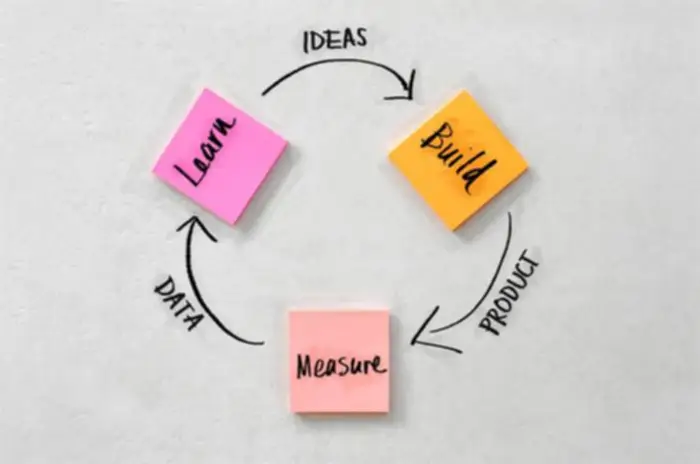Application Portfolio Management is utilized for strategic decision-making associated to software investment, optimization, and rationalization. APM is primarily involved with strategically managing applications to make sure alignment with enterprise aims. It particularly addresses software applications, evaluating their value and relevance to the business strategy. Another key distinction between the usage of how does apm work APM and observability lies within the implementation and ongoing use of the methods related to software program engineering. APM tools sometimes require engineers to add code directly into their software to instrument the power to observe sure indicators within their systems.
How Does Application Performance Monitoring Work?
Tracks the usage of system resources corresponding to CPU, memory, disk I/O, and community bandwidth by the applying. By figuring out useful resource inefficiencies, useful resource usage helps optimize infrastructure provisioning, scaling, and allocation, guaranteeing optimum efficiency and cost-effectiveness. In addition, APM as a Service offers organizations with extra insight into how their functions are performing, which can help to determine and fix issues more shortly.

Software Performance Monitoring Sources

By proactively monitoring an application’s efficiency, you’ll find a way to detect anomalies that would lead to instability. With real-time insights APM tools provide, you’ll be able to address these issues promptly and stop them from inflicting disruptions for your customers. This proactive method to application stability helps maintain a optimistic popularity for your corporation and retains prospects glad with dependable app experiences. APM collects and analyzes information from varied parts of an application to achieve detailed insights into its performance. At its core, APM relies on monitoring brokers installed throughout the application’s code or infrastructure.
What’s Utility Performance Monitoring?
- By monitoring request rates underneath totally different load circumstances, organizations can gauge utility capability and scalability, making certain seamless efficiency even during peak usage periods.
- Organizations additionally depend on APM instruments to ensure the productiveness of their growth and DevOps teams and steer them in the right direction.
- It makes use of tracking and monitoring to detect and diagnose advanced utility performance issues to maintain an expected stage of service.
- They can also offer options corresponding to alerting, which can notify teams if the application’s efficiency falls outdoors of acceptable ranges.
- This would allow you to take quick remedial action earlier than users are impacted.
Automated load balancing has the potential to trick IT professionals into pondering everything is working correctly because the combined efficiency of the servers seems to be fine. In reality, the automation could probably be masking issues where some servers are carrying extra of the load than others. APM tools might help IT professionals keep away from this concern by tracking all the servers without delay to find out the place an issue might be.
Utility Observability In Minutes: How To Implement App 360
Some tools help auto-instrumentation for all widespread programming languages, as well as OpenTelemetry requirements. Downtime and poor utility performance can have extreme penalties for companies, resulting in misplaced audience and misplaced income. APM safeguards towards these via offering early detection of performance points. When organizations can prioritize the place they spend their consideration and take proactive measures to prevent downtime, they maintain business continuity. By making certain the reliability and availability of purposes, APM protects income streams—along with brand reputation—and preserves the underside line. By monitoring the performance of your companies and applications, APM can help you to determine and diagnose any issues that may arise, avoiding downtime for critical business applications.

Although particular person tools could seem simpler, particularly to satisfy the needs of many teams, fragmented monitoring frequently creates problems. A single APM resolution that takes a full-stack observability strategy makes monitoring all these use circumstances straightforward and more reliable. Organizations typically run dozens of individual monitoring instruments without delay, particularly when they’re holding onto legacy purposes and managing them using the instruments they discover most familiar. For this reason, a powerful APM resolution based mostly on end-to-end observability is critical to correctly preserve and optimize fashionable functions. Tracking RAM helps determine reminiscence leaks that would result in failure or the necessity for larger memory.
Any lag, error, or bottleneck may be promptly addressed, making certain users have a seamless and environment friendly experience, growing customer retention and positive brand perception. After all, satisfied prospects haven’t any reason to cease using your products and services. Teams can leverage a service stock and distributed tracing to make certain that essential transitions, similar to cloud migrations or modernizations, don’t introduce regressions. Which instruments you need will depend in your specific application and on your own skills and knowledge. But there are some fundamental tools that most individuals will want, together with a data assortment software and a performance evaluation tool. DevOps and engineering groups can use APM tools to answer these questions and quickly discover and repair issues earlier than they affect actual users.
Through APM’s comprehensive analytics and reporting, firms perceive software performance trends, consumer behavior patterns, and infrastructure well being. These knowledge factors type the premise for making knowledgeable choices about software program updates, infrastructure adjustments, or enterprise methods. Machine learning-based instruments allow teams to routinely establish causal relationships between performance points and isolate their root cause.
This provides a macro-level view throughout multiple environments to supply continuous discovery. Visibility extends to the functions working within these environments, providing proactive anomaly detection prioritized by business impression. When organizations can depend upon a unified observability-based platform as a single supply of fact, teams can break down silos and obtain larger cross-team collaboration. When business, operations, software, and improvement teams are working from the identical knowledge units, they will streamline communication and reach selections quickly to resolve problems and optimize purposes. Amid the rising prominence and necessity of AI-driven services, APM also can monitor the performance of AI models embedded in purposes. AI model monitoring helps be certain that organizations can predict and management AI costs, performance, and information reliability.
Knowing what quantity of server or app cases you’ve running at one time is an important metric for cloud-based purposes. Success/failure – Track user conversion successes and failures to determine when a severe concern might have an effect on your backside line.Compare different application monitoring tools. The continued growth in mobile, cloud-native applications and workload migrations from the normal data center to cloud architectures continues fuels the APM and observability market. APM tools present organizations with the insights, proactive problem-solving, and data-driven methods they want to meet and exceed person expectations consistently. Gartner’s analysis, notably via instruments just like the Magic Quadrant, holds important weight within the IT business, and for good cause.